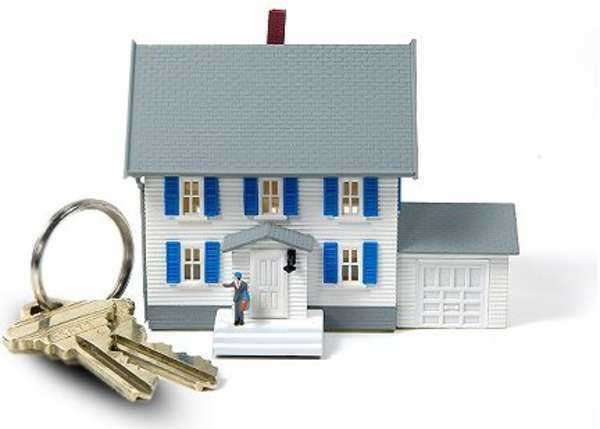
What Can a Refinance Do for You?
Refinancing is a word that you may hear a lot these days. If you’re a homeowner, it’s definitely a term you should be familiar with. In simple terms, refinancing means replacing your existing mortgage with a new one that has different terms and conditions. Usually, homeowners refinance their mortgage to save money by getting a lower interest rate or to shorten the duration of their mortgage. But a refinance can do much more than that. This article will outline the various benefits of refinancing and provide updated information backed by the government.
Lower Your Interest Rate
One of the primary reasons why homeowners refinance their mortgage is to lower their interest rate. If interest rates have dropped since you took out your mortgage, it may be a good time to consider refinancing. Even a small drop in interest rates can save you thousands of dollars over the course of your mortgage. How do you know when rates have dropped enough to make refinancing worthwhile? The rule of thumb is to refinance if your new interest rate will be at least 1-2% lower than your current interest rate. According to the Federal Reserve Bank of St. Louis, the average rate for a 30-year fixed-rate mortgage was 3.11 percent in November 2020, while in November 2019, it was 3.69 percent—a drop of 0.58 percent.
Reduce Your Monthly Payment
In addition to lowering your interest rate, refinancing can also help you reduce your monthly payment. This is especially true if you’re going from a 30-year mortgage to a 15-year mortgage, for example. In this case, your monthly payment will be higher, but you’ll pay off your mortgage much quicker. If you’re finding it difficult to make your monthly payments, refinancing can also help by extending the term of your mortgage. For example, if you have 20 years left on your mortgage, you can refinance into a new 30-year mortgage, which will lower your monthly payment. However, keep in mind that extending the term of your mortgage will mean paying more interest over time.
Shorten the Duration of Your Mortgage
If you’re looking to pay off your mortgage sooner, refinancing can help you do that. By refinancing into a shorter-term mortgage, like a 10- or 15-year mortgage, you’ll pay off your mortgage much quicker. Not only will this save you money on interest, but it will also help you build equity in your home faster. According to the Consumer Financial Protection Bureau, if you have a $200,000 mortgage with a 30-year fixed rate of 4%, you’d pay $143,739 in interest over the life of the loan. But if you refinanced into a 15-year mortgage with a fixed rate of 3%, you’d only pay $42,531 in interest over the life of the loan.
Switch from an Adjustable-Rate Mortgage (ARM) to a Fixed-Rate Mortgage
If you have an adjustable-rate mortgage (ARM), you may want to consider refinancing into a fixed-rate mortgage. An ARM is a mortgage with an interest rate that adjusts periodically based on a benchmark index. This means that your monthly payment can fluctuate based on changes in interest rates. If you’re someone who likes predictability and stability, a fixed-rate mortgage may be a better option. With a fixed-rate mortgage, your interest rate and monthly payment remain the same throughout the life of the loan.
Access Your Home Equity
Another benefit of refinancing is that you can access your home equity. Home equity is the difference between the value of your home and the amount you owe on your mortgage. You can borrow against your home equity by taking out a cash-out refinance. This means that you refinance your mortgage for more than you owe and receive the difference in cash. You can use this cash for a variety of purposes, like home improvements, paying off high-interest debt, or even taking a vacation. However, it’s important to keep in mind that a cash-out refinance will increase your mortgage balance and may increase your monthly payment.
Remove Someone from Your Mortgage
If you co-signed a mortgage with someone and you’re no longer together, refinancing can help you remove their name from the mortgage. This is known as a “quitclaim deed,” and it allows you to remove your ex from the title of the property. Once they’re off the title, they’re no longer responsible for the mortgage payments, and their credit score won’t be negatively affected if you fall behind on payments.
Get Rid of Private Mortgage Insurance (PMI)
If you put down less than 20% of the purchase price of your home, you’re required to pay for private mortgage insurance (PMI). This protects your lender in case you default on your mortgage. PMI can add hundreds of dollars to your monthly payment and can be a significant expense over the life of your mortgage. However, if you’ve built up enough equity in your home, you can refinance and get rid of PMI. According to the Federal Housing Administration, once your home has reached 20% equity, you can request to have your PMI removed.
Conclusion
In conclusion, refinancing can do a lot for you as a homeowner. It can help you save money on interest, reduce your monthly payment, shorten the duration of your mortgage, switch from an adjustable-rate mortgage to a fixed-rate mortgage, access your home equity, remove someone from your mortgage, and get rid of private mortgage insurance. As with any major financial decision, it’s important to weigh the pros and cons and consult with a financial advisor or mortgage specialist. Refinancing isn’t right for everyone, but for many homeowners, it can be a smart move that saves them money and helps them achieve their financial goals.
Refinancing is the process of getting a new loan in order to pay for an existing one. Individuals most often take advantage of refinancing when dealing with mortgages.
There are many different benefits of trying to refinance a mortgage:
• Getting a new loan that has a lower interest rate
• Adjusting the length of a mortgage. This can be either to increase the term and reduce the amount paid monthly or to get a shorter term mortgage, which often provides lower interest rate
• Going from an adjustable-rate mortgage to a fixed-rate mortgage. Changing to a fixed rate mortgage means the interest rate will be steady on a month to month basis. This is also beneficial if an individual anticipates rates increasing in the future.
• Getting an adjustable rate mortgage with improved terms. This can mean a lower starting interest rate, lower payment caps, or lower interest rate adjustments.
• Cashing out from built up equity: When refinancing for an amount that is greater than the amount owed on the house, it is possible to get the difference as a cash payment through cash-out refinancing. However, this will mean you own less of your home
While there are benefits to refinancing, it may not be suitable to refinance a loan or mortgage under certain circumstance:
• If an individual has had the mortgage for a long time. The longer those payments have been credited to the principle, the lower the interest becomes. Deciding to refinance a mortgage would mean restarting the whole process where most of the monthly payment would go to paying interest as opposed to building equity.
• Planning to move from the home soon. The difference in monthly payments may not exceed the costs of refinancing so a break-even calculation can be used to figure out whether it is beneficial to refinance the mortgage
• The current mortgage has a prepayment penalty. By paying the mortgage off early the lender may have the right to impose a fee that would charge for this. Sometimes the prepayment penalty can be waived if the same lender is doing the refinancing.
What determines eligibility for a refinance?
The process to determined eligibility is similar as the process used for approval in the original mortgage. Lenders will often look at assets and incomes, other debts, value of the property, credit score, and the amount of the mortgage needed. If the newer credit score is lower than the previous, it usually results in a loan with a lower interest rate.
How much does it cost to refinance?
Typically, refinancing fees can be between three to six percent of the outstanding principal. This is in addition to any other possible fees, such as prepayment penalties or other costs.
The fees to refinance vary from lender to lender as well as state to state. Some of the fees include:
• Application fee: cost of processing the loan request and checking the credit report, can be between $75 and $300
• Loan origination fee: charged by lender to prepare and evaluate the loan, cost between 0% and 1.5% of principal
• Points: A system where one point is 1 of the amount of mortgage loan. There can either be a loan-discount point, which when paid one time reduces the interest rate of the loan, or points charged by the lender to earn money on the loan. This can be between 0% and 3% of principal
• Inspection fee: Professional can come and test or analyze the structural condition of the home. This can cost from $175 to $350.
• Appraisal fee: appraisal of home to ensure the property is worth the value of the home which can cost between $300 to $700.
If an individual is hoping to refinance a loan or a mortgage, it is necessary to weigh the pros and cons. The goal is to save money so it is important to see if that is feasible for a given situation.




























